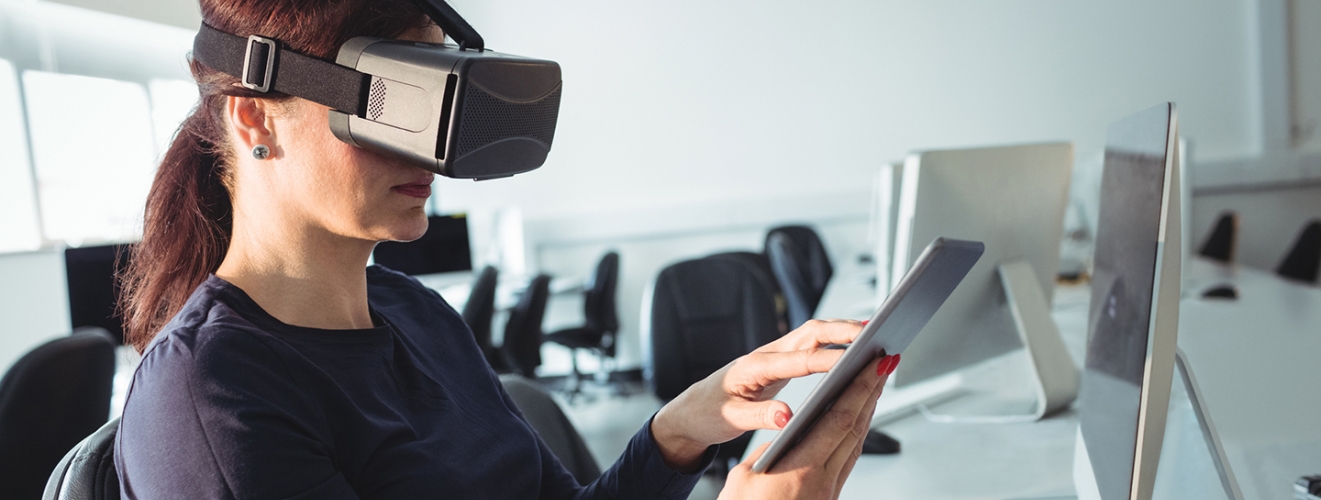Virtual Reality in Students Education
Author : Lavanya Posted On : Tuesday, 29th November 2016
In many of the ways that VR will enhance other human experiences, so too will VR enhance education. By making remarkable experiences available to students, this new era of affordable VR technology can transform education.
Micro-Experiences Impact Learning and Retention
For some time, educators have known that out-of-classroom experiences can have a profound impact on students, improving both learning and retention. George D. Kuh’s 2008 book discussed high-impact educational practices such as learning communities, internships, service learning, undergraduate research and study abroad. Kuh found that these experiences extend beyond the classroom and consistently provide benefits for students of all backgrounds.
Such programs require a great deal of time, personnel and money, which are significant barriers to institutional usage, Kuh notes. Further, not all students have access to such programming, even if it is available on campus.
The ubiquity and affordability of VR technology will make high-impact educational experiences more available to all students. Although not all students can travel abroad, anyone could go to the library, strap on a VR headset and take a short virtual trip.
An anthropology student might observe a group of people in a Mongolian yurt. A language or cultural studies student might take a guided tour of the Great Wall of China or other heritage sites. A marine biology student might familiarize herself with the Great Barrier Reef, seeing evidence of bleaching up close. A museum studies student might examine the collections of the Uffizi Gallery, including pieces not available to the public. And contemporary tours are not the limit; indeed, with VR, a history student could walk through ancient Rome, or an astronomy student might visit Mars.
We call these “micro-experiences” because they are far more limited in time and scope than, say, the above-mentioned study abroad experiences. Indeed, Jeremy Bailenson of Stanford’s Virtual Human Interaction Lab notes that a 20-minute experience is a good time limit, given how jarring and visceral VR can be. And yet, those 20 minutes can be transformative, as demonstrated by the body of research coming out of Bailenson’s lab.
Such micro-experiences need not be limited to travel. VR also supports training experiences. Virtual labs are already available for chemistry, engineering, biology and biotechnology students. Although these do not replace working alongside a researcher, they nevertheless permit early and safe access to lab equipment and encourage curiosity.
A host of VR programs are already in place for entertainment (video games, sports, movies and other media), journalism, storytelling, maker spaces, lectures, speeches and other performances. With VR, high-impact micro-experiences will become the norm and certainly an attractive feature for prospective students.
Meta-Experience Transforms Critical Thinking
VR pushes the central concept of high-impact educational practices to its furthest potential. The implication here is nothing short of a transformation, a revolution, a paradigmatic recentering in which education does not just include impactful experiences, but it becomes about experience itself. This we call “meta-experience.”
As this new instructional landscape opens up, we will need to create and refine a set of best practices that are couched in this new medium and its meta-experiential potential. Such practices, and the research we’ll use to build them, will likely address the following:
Students must confront the technical tools of VR, the mediated space itself, the mode of “being” (telepresence) — including the interrelated phenomena of vividness, interactivity and identity — the actual instructional content itself, and the relationship with reality in terms of life and world.
More and more educational research is attending to the emotional, affective, “noncognitive” dimensions of learning and successful educational experiences at all levels. With VR, affect is harnessed up front; the medium is designed to be intense, to bring the user, quasi-literally, into its subject matter and to work by engaging the mind-body through multiple sensory modalities. But how can we both employ and move beyond the “wow” factor to build knowledge? And, given the level of intensity involved with the medium, how can we do so critically and responsibly?
Metacognition, an important part of critical thinking and knowledge building, is foregrounded in VR because of the very fact that one moves into and out of it. In other words, it is in the movement between the physical world and the virtual that powerful opportunities for deep and reflective work for both instructors and students can happen. Imagine the kinds of classroom conversations made possible by that transitory movement.
Even as we explore such practices, VR applications outside of education will continue to evolve too, with a whole array of fascinating questions that will make their way into our classrooms. How do users in the wider world perceive and navigate multiple perspectives on reality itself? How might the human mind be changed in response to such experiences? How does “experience” itself become malleable and differentially conceived? How are new spaces for creating, meaning making, communication and relationships unfolding?
The world of VR in the experience of education points the way to this — an unfolding future in which the viscerality, the “liveness,” the embeddedness in the world of the stuff we’re teaching does not get a special name. Instead, it is interwoven throughout everything we teach, such that no longer is the classroom over here while “real life” is somewhere over there. The two are of a piece and, as such, are taught — and transformed — together.
Post Your Comments for this Blog Post
Blogs
South India spends most on higher education
How to pass exams when there is no time to revise?
Research proven tips for increasing childs IQ
How to pursue a course in Australia?
The Ultimate Student Guide For Surving Final Exams
How to crack UPSC Civil Services interview round?